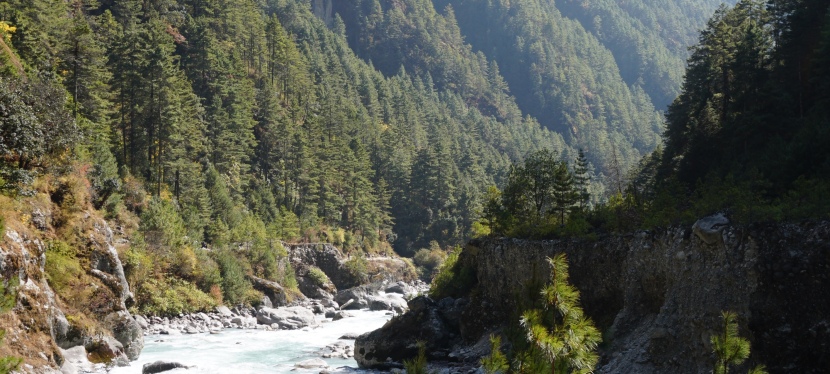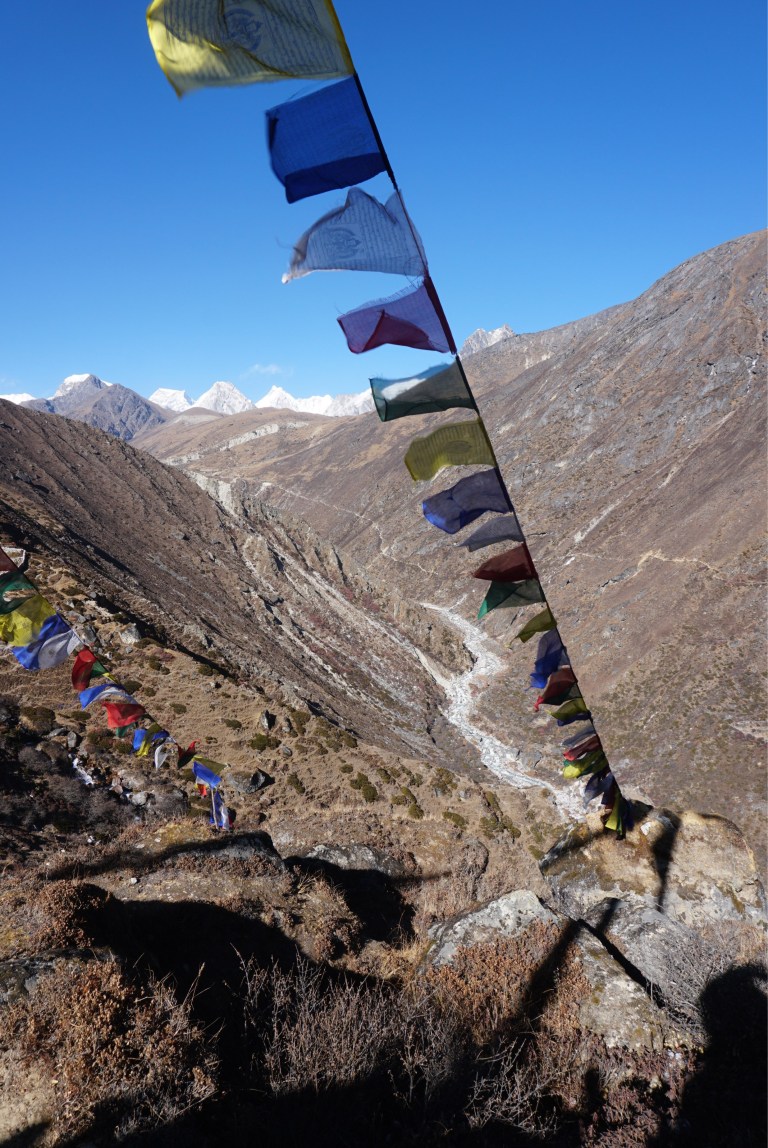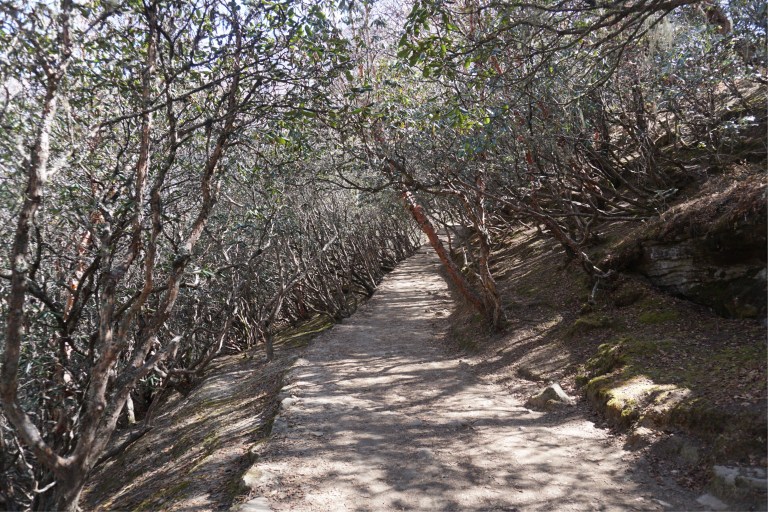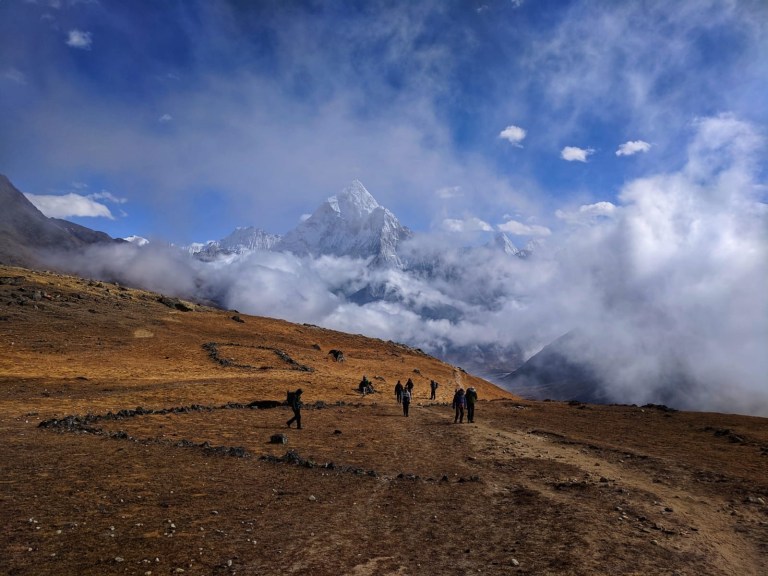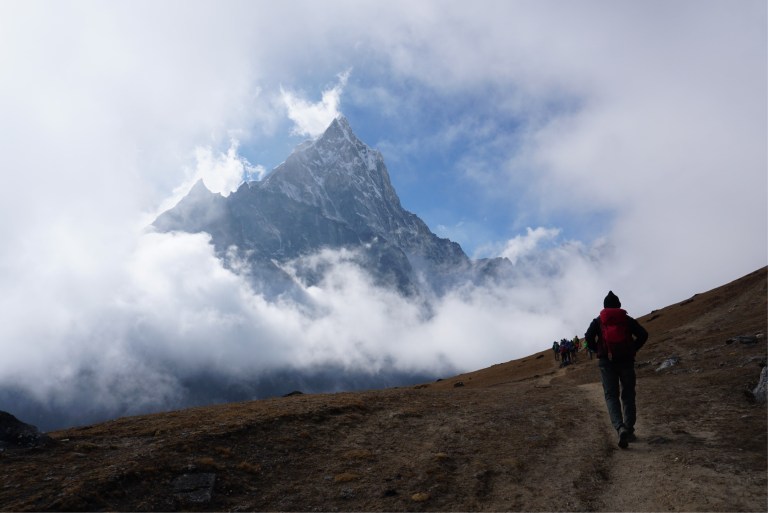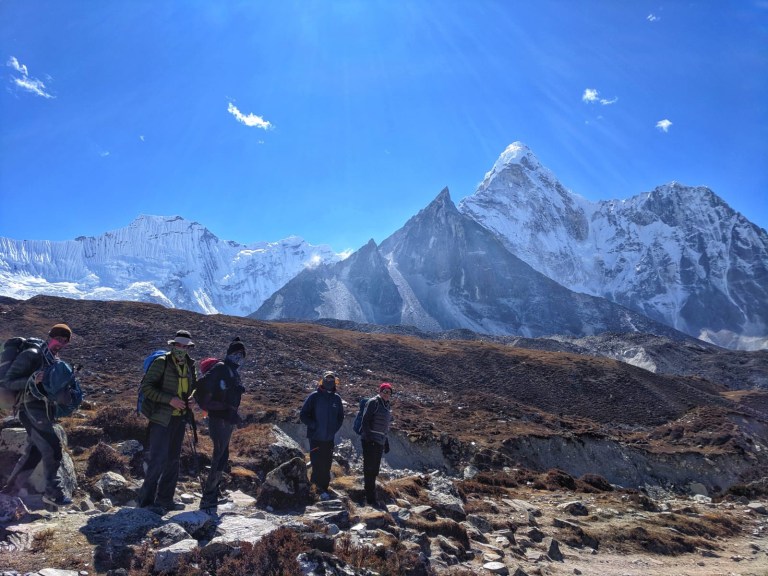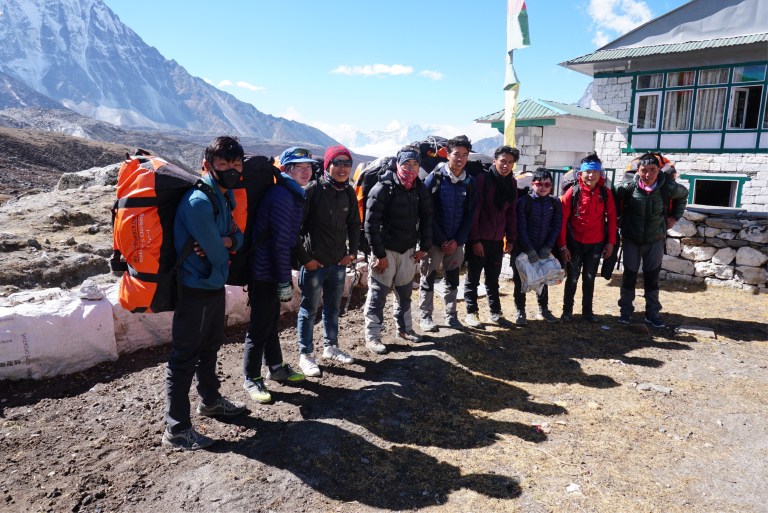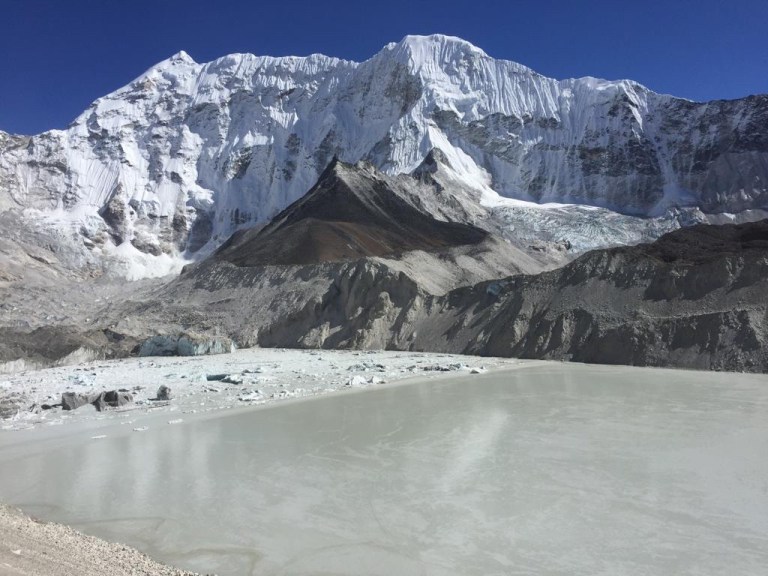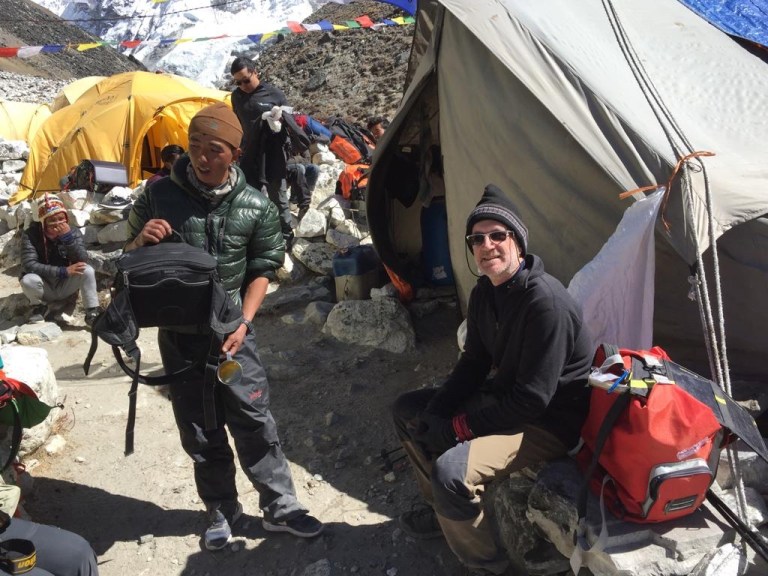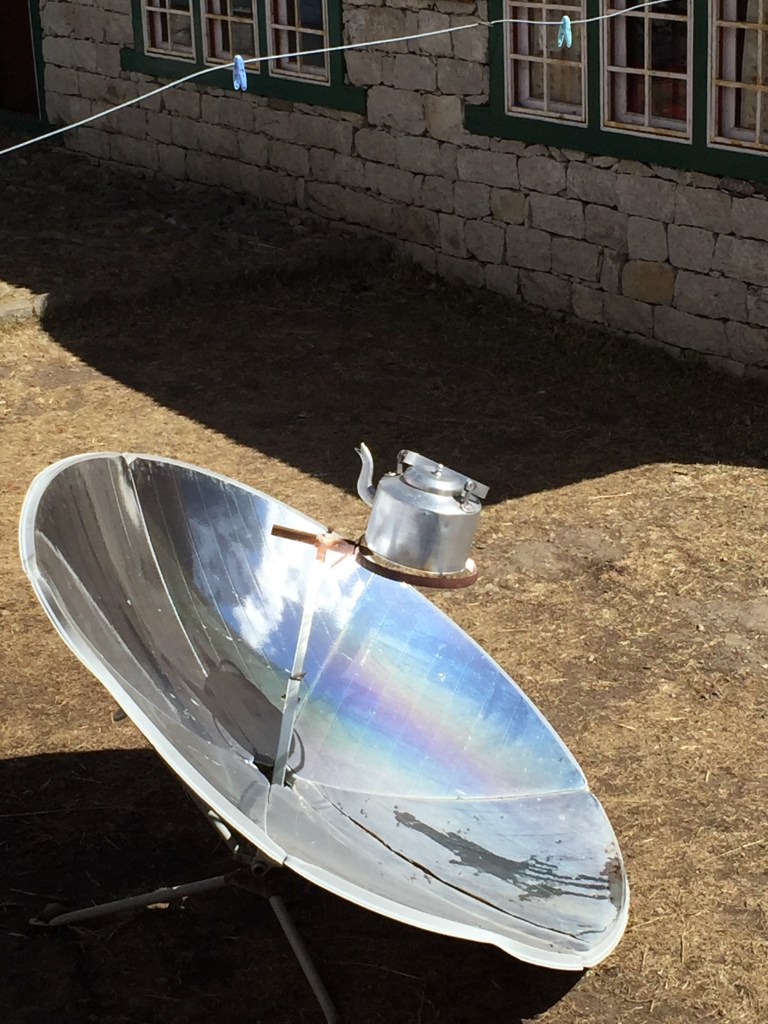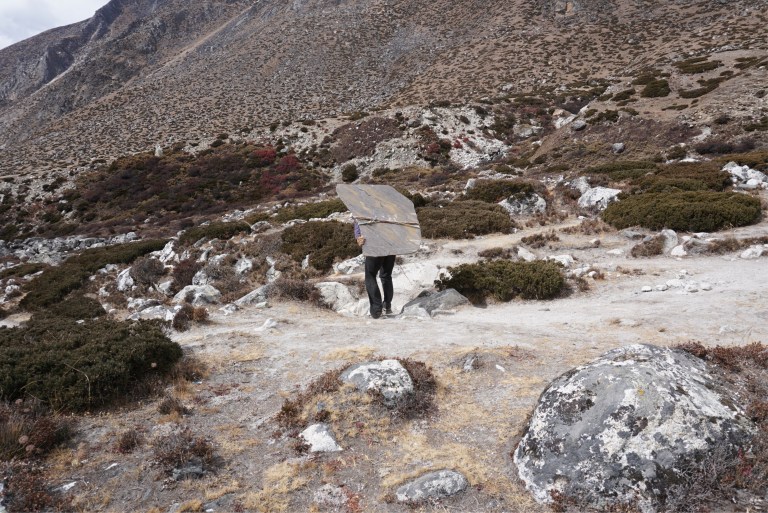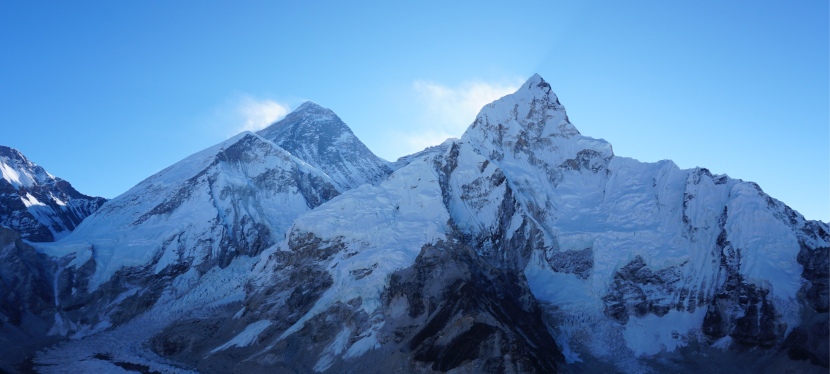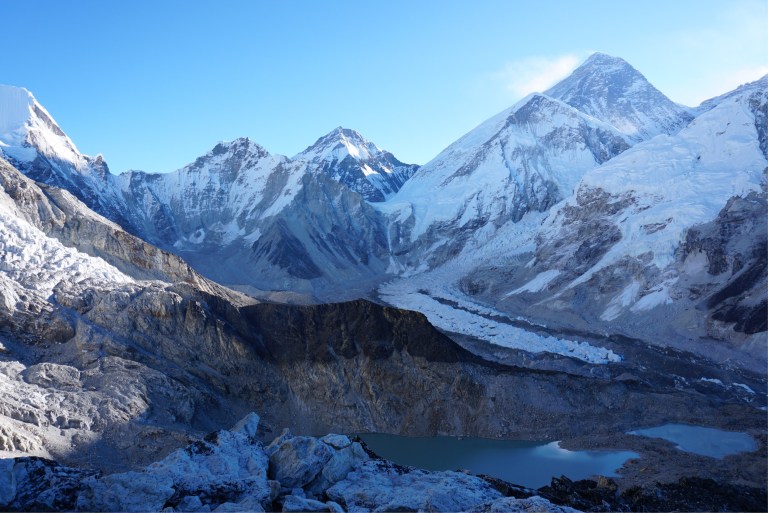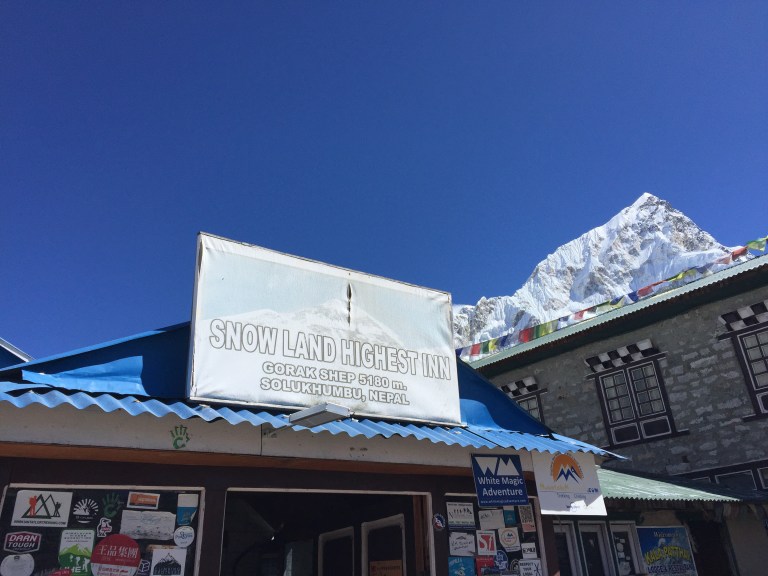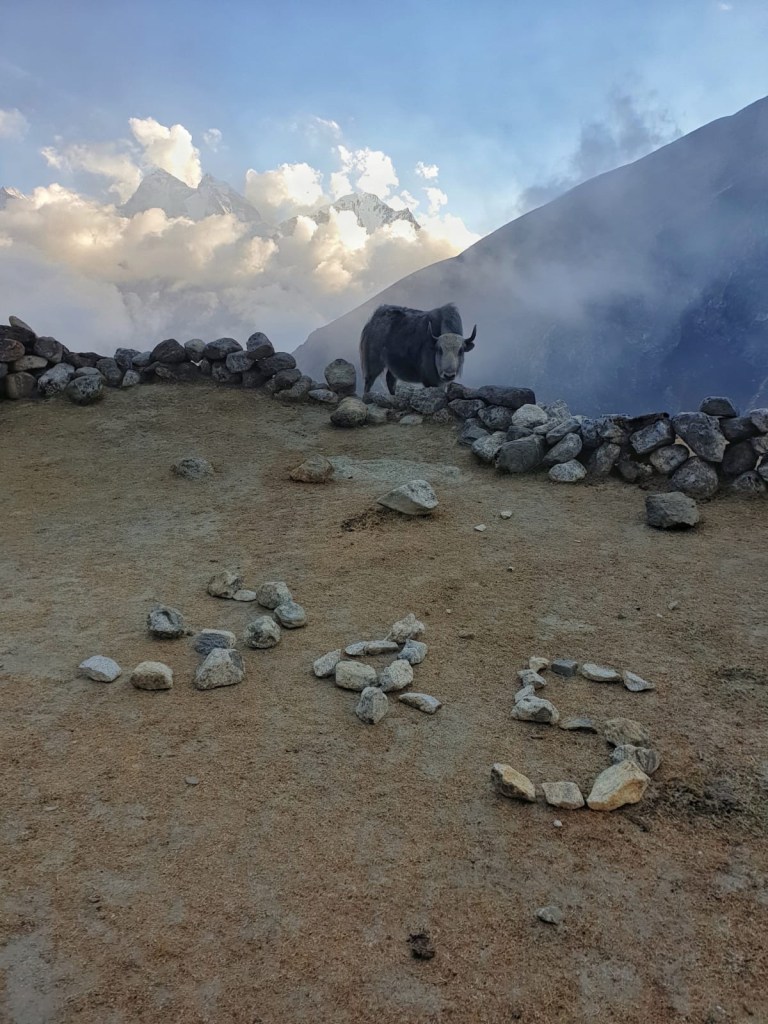It’s time to go home. We pack up in Namche ready for the two day trek back to Lukla with a wealth of unforgettable experiences from the past three weeks. The town clock tolls it’s simple bell chime telling us it’s 9 O’clock. Fittingly there are yaks in the passageway by our Tea House leaving gifts, I assume to wish us well on our journey?

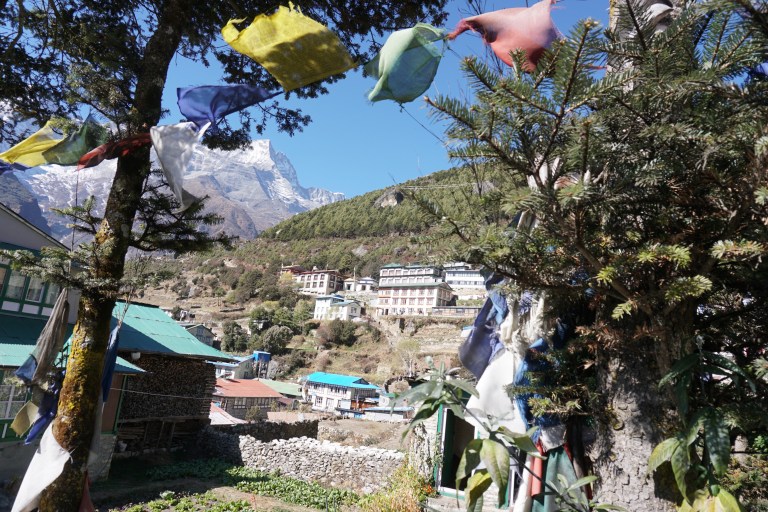
After an arduous three and a half minute descent it’s time for coffee.

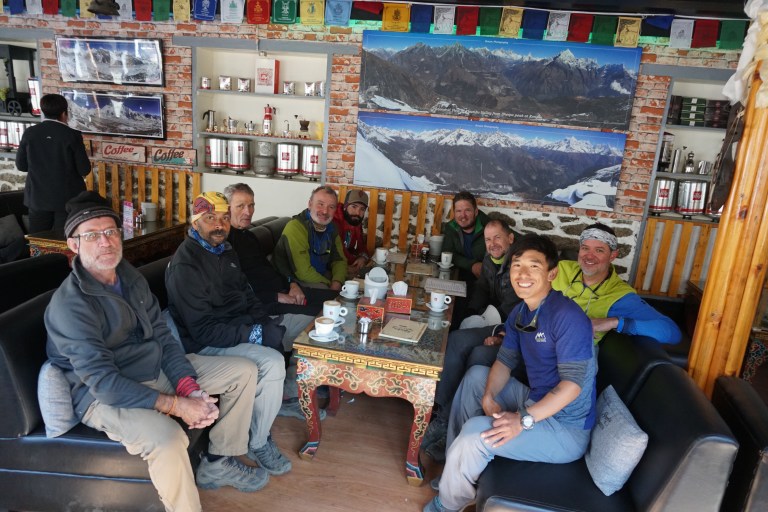
Our four guides throughout the trip have been just fabulous. Primarily they have ensured our safety but each of them have looked to make each day as comfortable as possible, helping those that need help, advising us as to local custom and making sure we achieve our goals. They are there to help in difficult situations and none more so than on the more challenging summits and treks. These guys and the many Sherpas and guides throughout the mountains are without question the hero’s. Thank you!

As we retrace our steps to Lukla we look at the faces of those fresh off the plane and starting their adventure and in turn them looking at us. What do they see? They are bright eyed, healthy and strong and by comparison we must resemble the walking wounded. In some way each of us is unwell, with many coughing and spluttering and we have three weeks of beard growth (it says something when after just three weeks my beard is longer that the hair on my head!). I asked the Turtle Trekkers to sum up the experience and the following words and phrases were used; dream come true, amazing, exhausting, incredible, challenging, gratifying, adventurous, memorable, exhilarating and cold. I do hope that the fresh faced walking the other way can read the more rewarding emotions when they look at us. My words are “eternally grateful”. Grateful to the simple kind generosity of the Nepalese people, grateful to have experienced such a magical adventure and grateful for the genuine friendship and companionship.
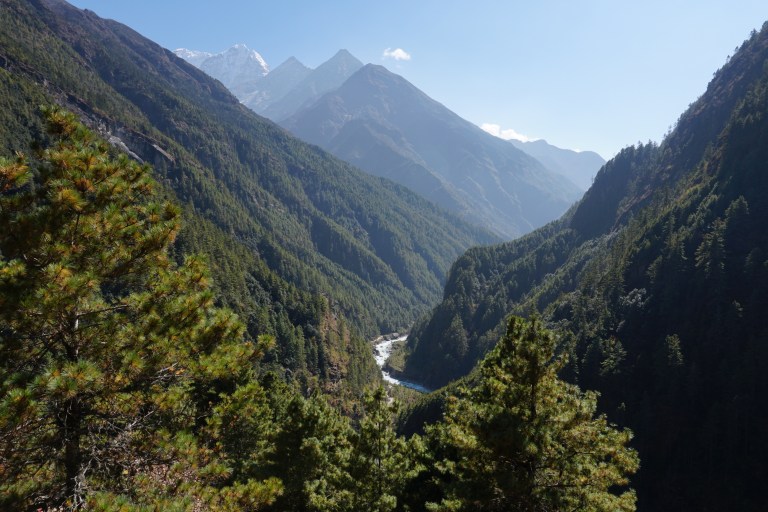

Sincere thanks to those that have taken the time to follow, comment, or message, your support means a great deal to the group. Thank you!


Finally, we are very much looking forward to getting together for coffee at Bruno’s next Monday morning.

